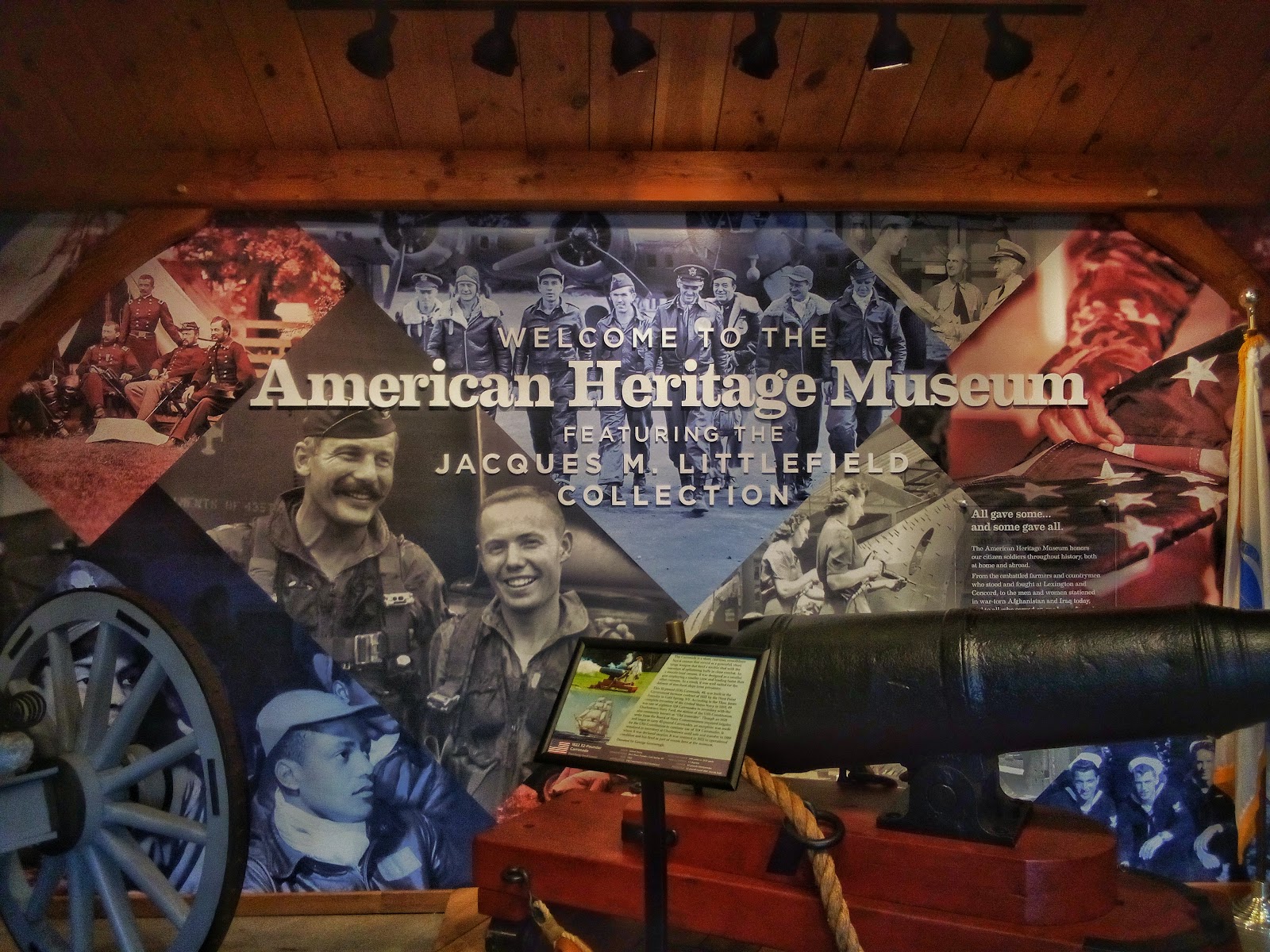American Heritage Museum

For my second stop during last Saturday’s adventure, I visited the American Heritage Museum in Hudson, MA. While the name “American Heritage” might make one think of apple pie, baseball, and fireworks, this museum was actually about military vehicles from around the world with a special focus on World War II. Opened five years ago based on the collections of the late Jacques M. Littlefield via the former Military Vehicle Technology Foundation, the massive 67,000 square foot (6,625 square meter) structure with a state-of-the-art lighting and audio-visual system showcases the largest collection of its kind in an empathetic and engaging way. The museum is part of the Collings Foundation, which tends to focus on aircraft.



After a brief walk through a life-sized model of a World War I era trench, a gallery containing Nazi vehicles and a Hitler mannequin, and an homage to factory production during World War II, visitors proceed down the stair or elevator to the main floor. This absolutely massive space is filled with tanks, aircraft, a piece of the Berlin Wall and the World Trade Center, more tanks, boats, guns, and even more tanks. So many tanks, each of which was unique, and many of which are the only one of their kind in the United States, if not the world.
One might ask, how did Littlefield come by so much rare military equipment? The answer to that is, I do not know. While at least one tank was pulled from water fifty years after sinking, and others appeared to be spoils of war later sold by a government, the stories for most of the artifacts were untold. Perhaps a future exhibit or documentary would shed light on the process of creating this impressive collection.



Each piece of equipment received its own sign giving its name, nation of origin, and a personal story or unfun fact related to the vehicle. For example, a half-wood, half-steel boat that survived the Normandy D-Day invasion in 1944 was built for the Navy by Andrew Higgins, who typically built boats for the “backwaters of Louisiana”. By some miracle, this boat did not sink, although many others did. A Soviet Russian tank had such poor visibility that it made its crew “deaf and blind” once inside, yet the model was used through the Vietnam War. The Churchill Crocodile was a British flamethrower tank so hated by the Nazis that crews were immediately executed when caught. American Pilot Major Charles Carpenter attached six bazooka launchers to the wings of his aircraft to shoot tanks during World War II. After learning these stories and many more, I was surprised the death count during the World Wars was not higher.
While the museum clearly had a pro-military focus, the depiction of soldiers from either side of World War II was remarkably fair. The pair of video and light show presentations reminded the audience that most soldiers of these wars were drafted civilians who had no choice in their affiliation with violent regimes. The museum is currently expanding its exhibit on the Holocaust and included a wide range of civilian and soldier imprisonments in its list of wartime atrocities, from the slaughter of millions by the Third Reich to the detainment of German and Japanese Americans in the United States.




However, this tone was not consistent throughout the museum. I noticed a shift during an exhibit about the torture of American Prisoners of War during the Vietnam War included video testimonials of American survivors but no voices of Vietnamese civilians who lived near the prison site. Video interviews with the family and squad members of a soldier killed by an improvised explosive device (IED) and the pair of pilots sent to track down a hijacked plane on 9/11 had a similar tone. The recency of these events likely clouded the otherwise evenly biased lens of the exhibit designers, and I do not blame them for these decisions.
While this museum was best in class, the material is not for everybody. Although the exhibits never become as heavy as those dedicated to preserving the memory of genocides, the litany of weapons and battles can overwhelm the visitor. The space is ADA compliant and fully wheelchair accessible. However, the space is dimly lit, making some signage difficult to read, and few benches are available. This may not be a good experience for children under ten, although the setup is excellent for school field trips, scouts, and church groups. The gift shop had some odd items, including a plush tank and sauces containers shaped like hand grenades, that might delight some museumgoers and offend others.
The museum is open year round except for major holidays, Wednesday through Sunday, 10:00 a.m. through 5:00 p.m. Tickets are $23 for adults; $20 for seniors over 62, active duty, and younger veterans with ID; $12 for children 16 and under; $3 for those qualifying through the Card to Culture program, and $0 for children 3 and under, members, and WWII & Korean War veterans. Visitors save $2 by purchasing online before their visit.
Abby Epplett’s Rating System
Experience: 8/10
Accessibility: 7/10